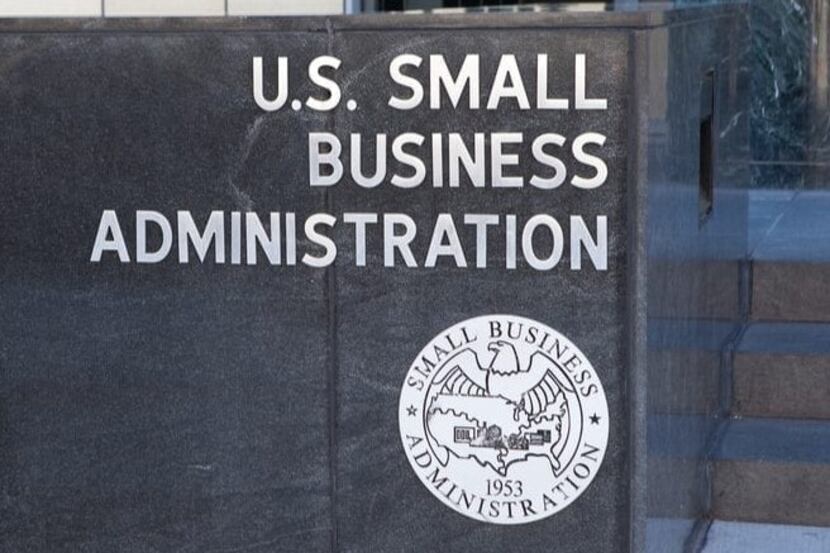The U.S. Small Business Administration said last week it had disbursed only $1.5 billion of the $30 billion available for a COVID-19 aid program meant for small businesses in low-income areas.
The problem? It needed more applicants.
That angered business owners who applied months ago and are still waiting for money. It also frustrated owners who are struggling to survive month-to-month but don’t qualify for the grants because they aren’t in low-income areas defined by an SBA mapping tool.
Since last March, SBA’s disaster loan office has received 19 million applications for the Economic Injury Disaster Loan program meant to aid small businesses during the pandemic. Previously, its record was less than half a million applications after the 2005 hurricane season in the Gulf Coast that included Katrina and Wilma.
“I don’t think people fully appreciate the change in response that was required of the SBA,” said Alejandro Contreras, director of preparedness, communication and coordination at SBA’s Office of Disaster Assistance.
The disaster loan office had about 1,000 employees before COVID-19 and is now up to more than 8,100 workers. Historically, the staff grows in the summer due to hurricanes and wildfires. For the 2017 hurricane season that included Harvey and Maria, it staffed up to 5,000 employees.
Applicants have to first apply for an Economic Injury Disaster Loan to get the email invite to apply for the two grants aimed at businesses in low-income areas: the $10,000 Targeted EIDL Advance for businesses with 300 or fewer employees and a 30% decrease in revenue over an eight-week period since March 2, 2020, and the $5,000 Supplemental Targeted EIDL for businesses with 10 or fewer employees and a 50% loss for the same period. They don’t have to be approved for the EIDL or accept it to apply and receive the grants.
The SBA has had more than 1.7 million applications for the Targeted EIDL Advance so far and approved and funded over 193,000 totaling about $1.6 billion. In addition, more than 127,700 applications have been approved for the Supplemental Targeted EIDL for a total of about $638.8 million.
However, of those 1.7 million applications, most have been processed and a decision has been made, Contreras said. That’s why the disaster office is asking for more applicants, he said. He doesn’t have a figure for how many have been declined. However, for those who were declined, the most common reasons were either not being in a low-income area — which is defined by the Internal Revenue Code and based on census tracts — or not meeting the revenue loss requirement, he said.
Contreras said it’s important to have a steady stream of applicants, which are processed in the order they’re received.
“Based on the number of applications we’ve received so far, we know that we’re still going to have funds available,” Contreras said. “So this isn’t a matter at all of moving on to another group.”
It has $28.4 billion of $30 billion left over for the Targeted EIDL Advance program; just under $4.5 billion of $5 billion left over for the Supplemental Targeted EIDL; and about $260 billion left over for the overarching EIDL program — more than the total $213 billion the program has funded since last March.
“There’s the potential to do quite a bit more,” Contreras said.
But as the SBA asks for more applicants, online forums are lighting up with people who applied for the grant when it opened in February and in the months since and are still waiting on funding.
Jennie Washington, a licensed massage therapist in Utah, applied for the Targeted EIDL Advance in February. Her funds didn’t hit her account until June 24. During the four-month wait, she was treading water after the pandemic left many wary of being close to strangers, as in a massage.
“I don’t make millions or hundreds of thousands,” she said. “I had to stop my office space because I couldn’t pay the rent.”
To try to move the process along, she first tried the SBA helpline, but they weren’t able to tell her why her funds were delayed and even hung up on her a few times, Washington said. She ended up contacting her senators, who she thinks helped it move this week.
Other applicants have been delayed due to banking issues, including doing business with banks that don’t accept SBA funds or switching banks.
Doug Vernon, a South Carolina resident with a restaurant consulting business and a catering business for schools, was approved for $9,000 in April but still hasn’t received it due to an “error” status on his account caused by changing banks. He also can’t get an invite to the Supplemental Targeted EIDL until he’s cleared for the Targeted EIDL Advance.
Vernon said he’s run through his savings and retirement to keep his employees. Now he’s faced with paying rent for his business next month or paying his mortgage.
“My business will not survive past July 1 without it,” he said. “I simply cannot incur any more personal debt on this road to recovery.”
Applicants understand complications arise, Vernon said, but he feels like he’s unable to talk with anyone at SBA who can help. He said the agency’s customer service line often gives different answers to his queries.
Contreras said call agents participate in a three-day training program that goes over program information, systems access and customer service skills. Afterward, agents receive “additional training on various topics to expand the depth of their program knowledge,” he said. They have the authority to advise callers and provide information, he said. For more serious technical issues, they can submit a help desk ticket for the caller.
Like Washington, Vernon contacted his U.S. senator, Lindsey Graham, and has seen movement for the first time. He got an email about updating his banking information, he said. Now it’s back in processing.
“They should take care of the applications they have before marketing it to the others,” he said. “They don’t have the manpower for their current caseload.”
But Contreras maintains that applications are being processed in a timely manner. The average processing time is under 30 days for loans received since last March. For the latter part of 2020, that was shortened to 17 days, with half that time being the SBA waiting on a response from applicants to select the loan amount or agree to conditions.
“That’s a pretty good average for 19 million applications, but we strive to do better,” he said.
Once accepted, funding should hit accounts in seven to 10 days, Contreras said. For those running into bank return issues for the Targeted EIDL Advance program, he said they can email COVIDAdvanceBankReturns@sba.gov.
The most common mistake Contreras sees that leads to delays is not using 2019 federal tax return figures when filling out the EIDL and two grant applications. If there is a mismatch between those figures, it will cause delays, he said. If the difference is really large, it will raise concerns, he said.
Another possible delay comes after the applicant is already approved for the grants based on meeting the revenue loss and low-income area criteria. It then moves to the funding approval process, where it’s checked against the U.S. Department of Treasury’s Do Not Pay List. If there’s a match, someone from the SBA will reach out to resolve the issues.
Some applicants who don’t qualify for grants because of their location are irritated at seeing billions in leftover money.
Kris Cantu, a car detailer in Tennessee, is a single dad of three teens who saw a 60% net loss for his business in 2020. But his application was turned down because he was outside the geographic qualifications.
“It’s not about how much trouble we’re in, but we’re not in this little circle,” he said.
Last year, Cantu received two loans for $4,700 each from the SBA’s Paycheck Protection Program. He also received a $6,000 EIDL. He was hoping to get $6,000 to $10,000 from the grant program to keep the business afloat until it can get more employees.
He typically has seven people working this time of year, but he only has four right now, with two of those brought on last week. He’s had over 50 interviews with potential employees but says no one wants a job because they’re receiving additional unemployment benefits. Cantu, 48, is working 16-hour days seven days a week to stay in business.
“My biggest gripe is we’re now trying to open as a country and are paying people to stay home, but we’re not paying to help businesses stay afloat that can’t get employees,” he said.
Twenty-six states, including Texas, are ending the $300-per-week enhanced federal unemployment benefits before they’re set to expire in September.
“For me, it doesn’t take much but one or two bad months, and you’re done,” he said. “And there’s a lot of little guys like me where that’s the case. That’s the scary thing.”
Last week, an SBA official told The Dallas Morning News that the program would eventually open to all geographic areas. However, Contreras said the agency isn’t aware of any legislative actions that would make that change.
“Our job is to implement the program under the current rules,” he said. The EIDL program, as well as the two grant programs, will be open through Dec. 31 or until funds run out.
Contreras said he expects the EIDL program to start receiving more applications due to two recent changes.
Prior to June 3, the SBA was only accepting grant applications from businesses that applied for an EIDL before Dec. 27. Now, it’s open to all EIDL applicants.
Second, under the previous administration, the EIDL limit was set at six months of working capital with a $150,000 cap. Under the new administration, that’s been increased to 24 months of working capital with a cap of $500,000. Since the loan limit increased on April 6, the SBA has received 28,000 new loan requests for an average amount of $165,000. The average amount before the increase was $54,000.
“It’s had a definite impact on the average loan size and that’s only in the first 80 days,” he said.

